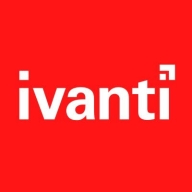

Both Ivanti Endpoint Security for Endpoint Manager and Microsoft Intune are in the endpoint security management category. Microsoft Intune appears to have the upper hand because of its comprehensive feature set and easier deployment that might provide higher ROI in the long term.
Features: Ivanti Endpoint Security offers patch management, vulnerability remediation, and unified management for mobile and laptops. Microsoft Intune provides comprehensive cloud-based management, cross-platform compatibility, and integration with Microsoft 365 services, making it ideal for extensive policy and application control.
Room for Improvement: Ivanti could enhance its cloud integration and reduce on-premises setup complexity. Microsoft Intune might benefit from better mobile policy coverage and pricing optimization for organizations with diverse OS needs. Both could improve UI usability for non-technical users.
Ease of Deployment and Customer Service: Ivanti uses a more traditional on-premises model that demands setup time but offers robust support. Microsoft Intune simplifies deployments through cloud-based systems, with rapid implementation and straightforward integrations, although its customer support might not match Ivanti's level of dedication.
Pricing and ROI: Ivanti's lower setup costs could yield quicker ROI for specific security tasks, whereas Microsoft Intune, despite potentially higher expenses, provides broad value through its feature set and efficient deployment, suggesting better long-term ROI.
Everything we've gained from it makes my job easier day after day, and I see value in it as an engineer.
Microsoft Intune not only saves costs by reducing the number of personnel needed but also offers a comprehensive solution for managing laptops, applications, security, individual access, and enrollment.
Importantly, when someone leaves the company, it helps protect document access on their devices.
I rate customer service at eight out of ten as there is room for improvement in response time.
When a support ticket is submitted, it directly reaches someone with Intune support expertise.
When I contacted Microsoft, they had the same expertise, if not more, which is phenomenal because I felt heard and my problem was solved.
Sometimes, the support provided is excellent, and the representative is knowledgeable, while other times, the service needs improvement.
On a scale from one to ten, the scalability of Ivanti Endpoint Security for Endpoint Manager would be rated between eight and ten.
The scalability of Microsoft Intune is ten out of ten.
Ideally, we want to automatically segregate devices based on user properties like primary use, but currently, dynamic groups seem limited to device properties.
It supports organizations with 200 endpoints and those with more than 15,000 endpoints.
We have not experienced downtime, bugs, or glitches.
It appears Microsoft Intune undergoes changes without informing customers.
Microsoft Intune has been very stable.
Navigation could be better optimized for quick navigation by the user.
Features like unlocking devices sometimes fail, and the support offered for other operating systems is insufficient.
There are communication issues, so you might start working with a feature without knowing if it will be deprecated six months from now.
Many third-party companies offer single-pane-of-glass reporting that shows you what your update environment looks like, how your patch is doing, application status, etc., but Intune's reporting is not intuitive.
Introductory professional services, like a fast-track service, were included with our E5 membership, and there have been no additional costs.
The Intune suite and add-ons, such as batch management and remote help, are costly.
It costs approximately forty euros per user per month.
Ivanti Endpoint Security for Endpoint Manager is cloud-based, which aids in deployment.
Intune excels in configuration and compliance management for Windows 10, ensuring devices receive timely updates and adhere to organizational standards.
Dynamic groups allow us to set conditions for automatic membership, eliminating the need for user intervention or manual review and ensuring a seamless workflow.
Windows Autopatch is the most valuable because it removes the burden of patch management.
| Product | Market Share (%) |
|---|---|
| Microsoft Intune | 32.6% |
| Ivanti Endpoint Security for Endpoint Manager | 0.8% |
| Other | 66.6% |


| Company Size | Count |
|---|---|
| Small Business | 2 |
| Midsize Enterprise | 3 |
| Large Enterprise | 5 |
| Company Size | Count |
|---|---|
| Small Business | 116 |
| Midsize Enterprise | 46 |
| Large Enterprise | 152 |
Ivanti Endpoint Security for Endpoint Manager is a comprehensive security solution designed to protect endpoints and ensure the overall security of an organization's network. It combines the power of Ivanti Endpoint Manager with advanced security features to provide a robust defense against cyber threats.
With Ivanti Endpoint Security, organizations can effectively manage and secure all endpoints, including desktops, laptops, servers, and mobile devices, from a single console. This centralized management approach simplifies security operations and allows for better visibility and control over the entire endpoint environment.
One of the key features of Ivanti Endpoint Security is its advanced threat detection and prevention capabilities. It employs a multi-layered approach to identify and block known and unknown threats, including malware, ransomware, and zero-day attacks. Real-time threat intelligence and behavioral analysis help to proactively detect and mitigate potential security risks.
In addition to threat detection, Ivanti Endpoint Security offers robust endpoint protection features. It includes advanced antivirus and anti-malware capabilities, as well as web filtering and application control, to prevent unauthorized access and ensure compliance with security policies. It also provides data encryption and secure remote access to protect sensitive information and enable secure remote work.
Ivanti Endpoint Security also includes vulnerability management features to identify and remediate security vulnerabilities across endpoints. It scans for missing patches and updates, and automates the patching process to ensure endpoints are up-to-date and protected against known vulnerabilities.
Furthermore, Ivanti Endpoint Security offers comprehensive endpoint compliance and auditing capabilities. It helps organizations meet regulatory requirements by providing detailed reports and audits on endpoint security posture. It also enables organizations to enforce security policies and configurations consistently across all endpoints.
Ivanti Endpoint Security for Endpoint Manager is a powerful security solution that combines endpoint management and advanced security features to protect organizations from a wide range of cyber threats. Its centralized management approach, advanced threat detection capabilities, and comprehensive endpoint protection features make it an ideal choice for organizations looking to enhance their endpoint security posture.
Microsoft Intune provides centralized management of mobile devices and applications, ensuring security, compliance, and productivity through integration with Microsoft services like Microsoft 365 and Azure Active Directory.
Organizations use Intune for managing mobile devices and applications, enhancing security and compliance across platforms. With features like single sign-on, conditional access, and zero-touch deployment via Autopilot, it facilitates efficient operations. Intune's scalability, easy enrollment, and capabilities such as remote wipe support diverse device management, offering robust data protection and efficient operation. Despite its features, improvement areas include reporting, compatibility with non-Microsoft devices, and better support for macOS and Linux devices.
What are the key features of Microsoft Intune?
What benefits should users look for in reviews?
In industries such as finance, healthcare, and education, Microsoft Intune is implemented to ensure secure and compliant device management. Companies leverage its capabilities to deploy security policies and manage both corporate-owned and BYOD environments, facilitating a unified approach to data protection and compliance.
We monitor all Unified Endpoint Management (UEM) reviews to prevent fraudulent reviews and keep review quality high. We do not post reviews by company employees or direct competitors. We validate each review for authenticity via cross-reference with LinkedIn, and personal follow-up with the reviewer when necessary.